Traipsing through the medina of Fèz el-Bali provided a glimpse into another world: spicy aroma filled the sultry air as people, dressed in multiple colours of Moroccan vibrancy, moved between mosques, food stalls and craft workshops – disappearing down narrow lanes and reappearing moments later from the bazaar.
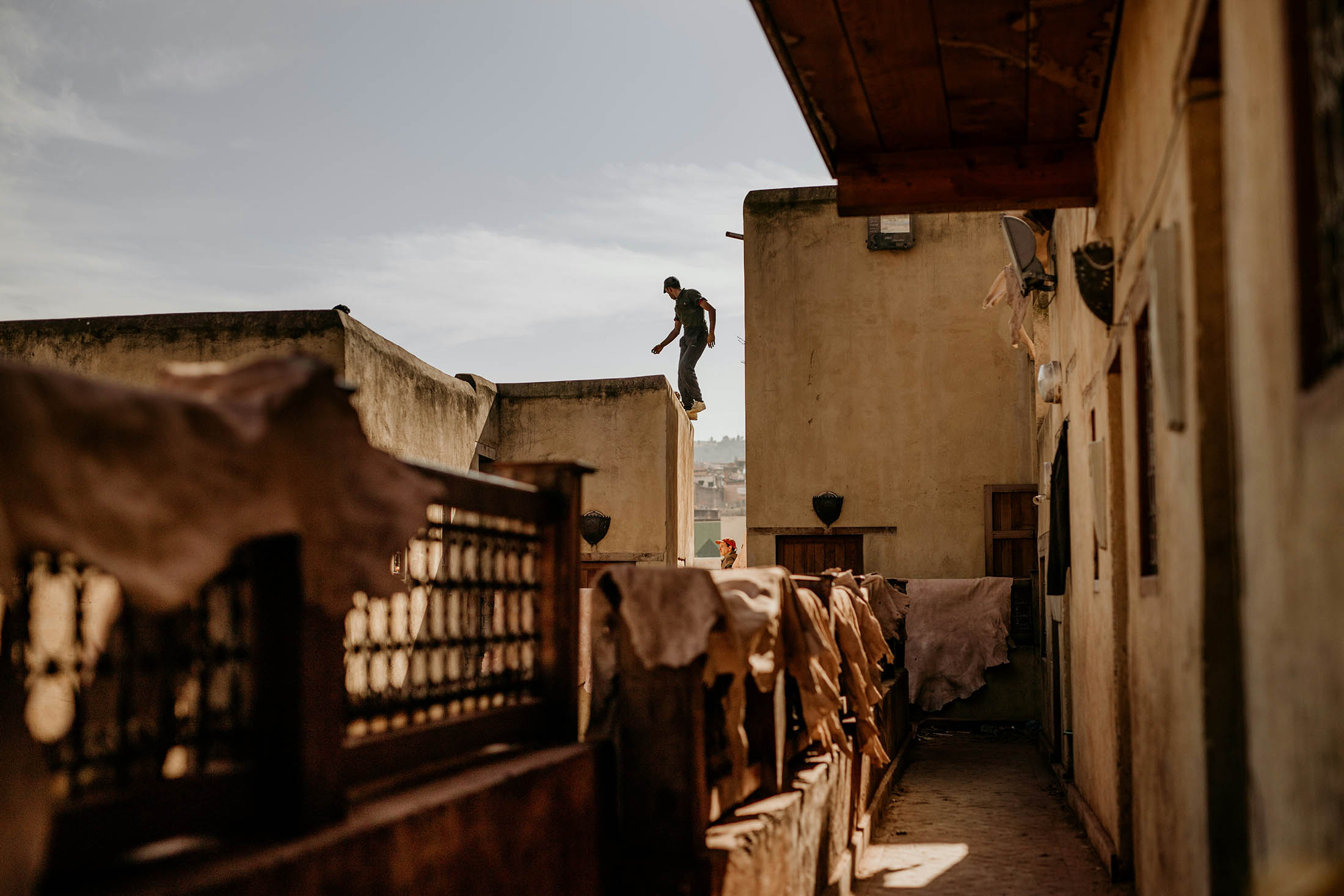
The clang and clash of metal emerged from bazaar stalls, overpowering the hee-haw of donkeys as they passed, rancorously pulling carts laden with Moroccan trinkets. Handmade goods of multifarious assortment - overwhelming my sense of want - reflected the glint in my twinkling eyes: they planted the seed of fervour and sent me back to the bazaar hours later to reignite my waning sense of materialism.
Fèz’s Labyrinth: The Bazaar
Cultural enlightenment aside, markets in Morocco – also known as souks (or open-air markets) and bazaars (or enclosed markets) – are a place of vitality: artisans present their craftsmanship – always handcrafted and built to withstand the test of time - to shoppers passing by.
Located within the medina (the city’s old quarter), the bazaar of Fèz - and by extension other Moroccan cities - is an enchanting relic of yesteryear and provides a glimmer of society today. It gives visitors an authentic taste of Morocco from within its labyrinth.
Shoppers are exposed to an array of objet d’art and, for visitors from afar, it is cultural voyeurism: exposed to the daily customs of marketgoers, it’s easy to get a taste of everyday living.
Rhythmic Intonation: The Sounds of Morocco
Its rhythmic beat exudes a sense of exoticism evocative of starry Saharan nights: baroquely adorned belly dancers move seductively across the desert floor, from spectator to spectator, their hips swinging metrically to the cadenced beat.
Mastering the production of a rhythmical thump on the Moroccan darbuka takes time, as does the craftsmanship behind its creation. Made from crudely assembled earthenware, the darbuka is intricately decorated with arabesque-like blue-and-white designs. The decorative artwork is bold, much like the plates - beside which its featured - scattered throughout the bazaar. The simple covering, made entirely of camel hide, is the soul of the drum: its thump creates the boom that reverberates through the air.
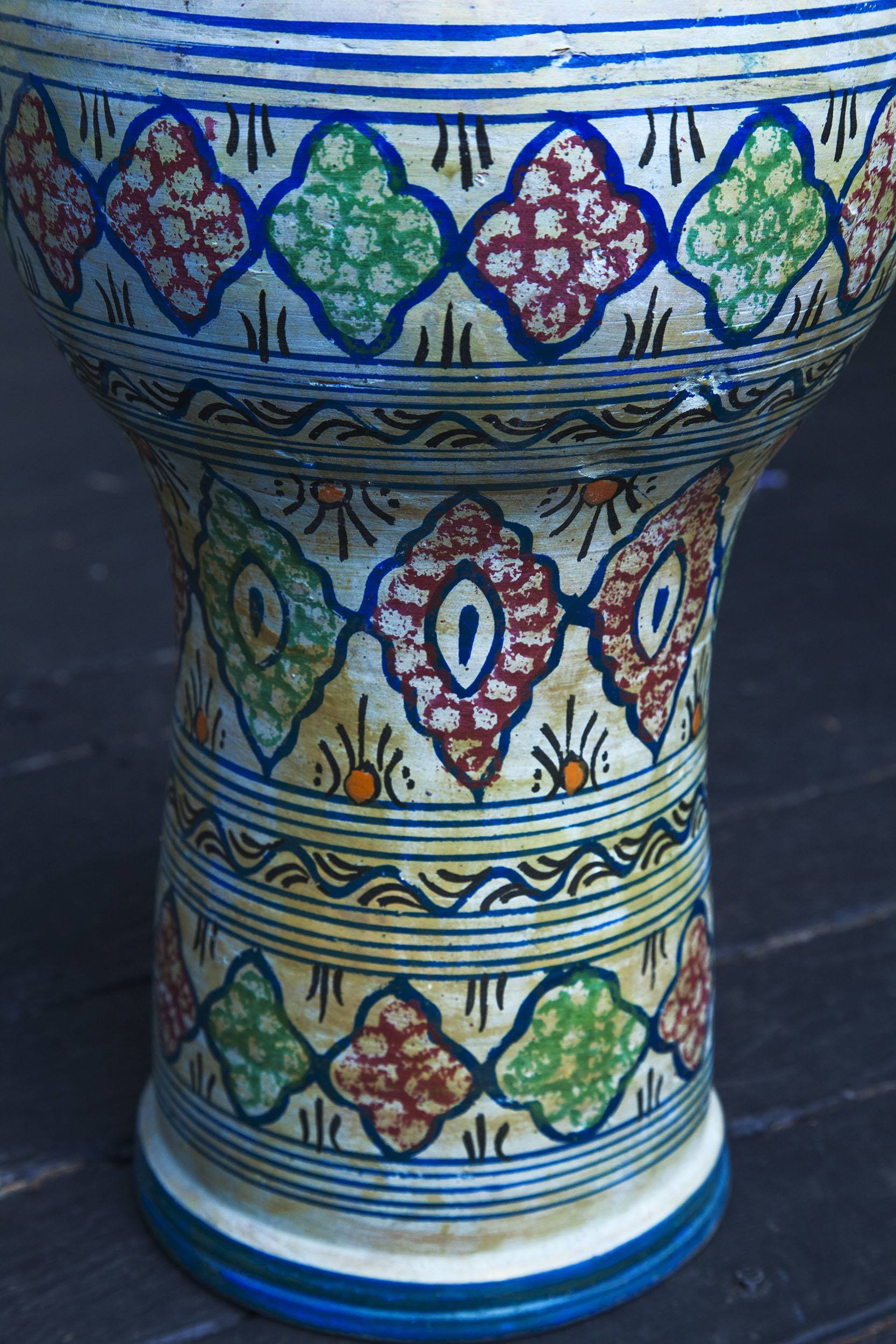
Juxtaposed beside tajine pots, efforts to keep my fingers off the beauteous creation were futile. For the equivalent of five euros, I laid my hands on a prized piece of Moroccan artistry, a pride-of-place ornament for a future home.
Classy Brass: Plates of Antiquity
Matched in only beauty to the darbuka, handcrafted brass plates are synonymous with Morocco and glitzily reflect the light fragmented throughout Fez’s bazaar.
Often only a handspan in diameter, the artwork that radiates laterally across their small faces is elaborate, indentations made painstakingly by the thud and clink of hammer thrusts. Perfectly spherical, the plates have a variety of uses but are mostly ornamental.
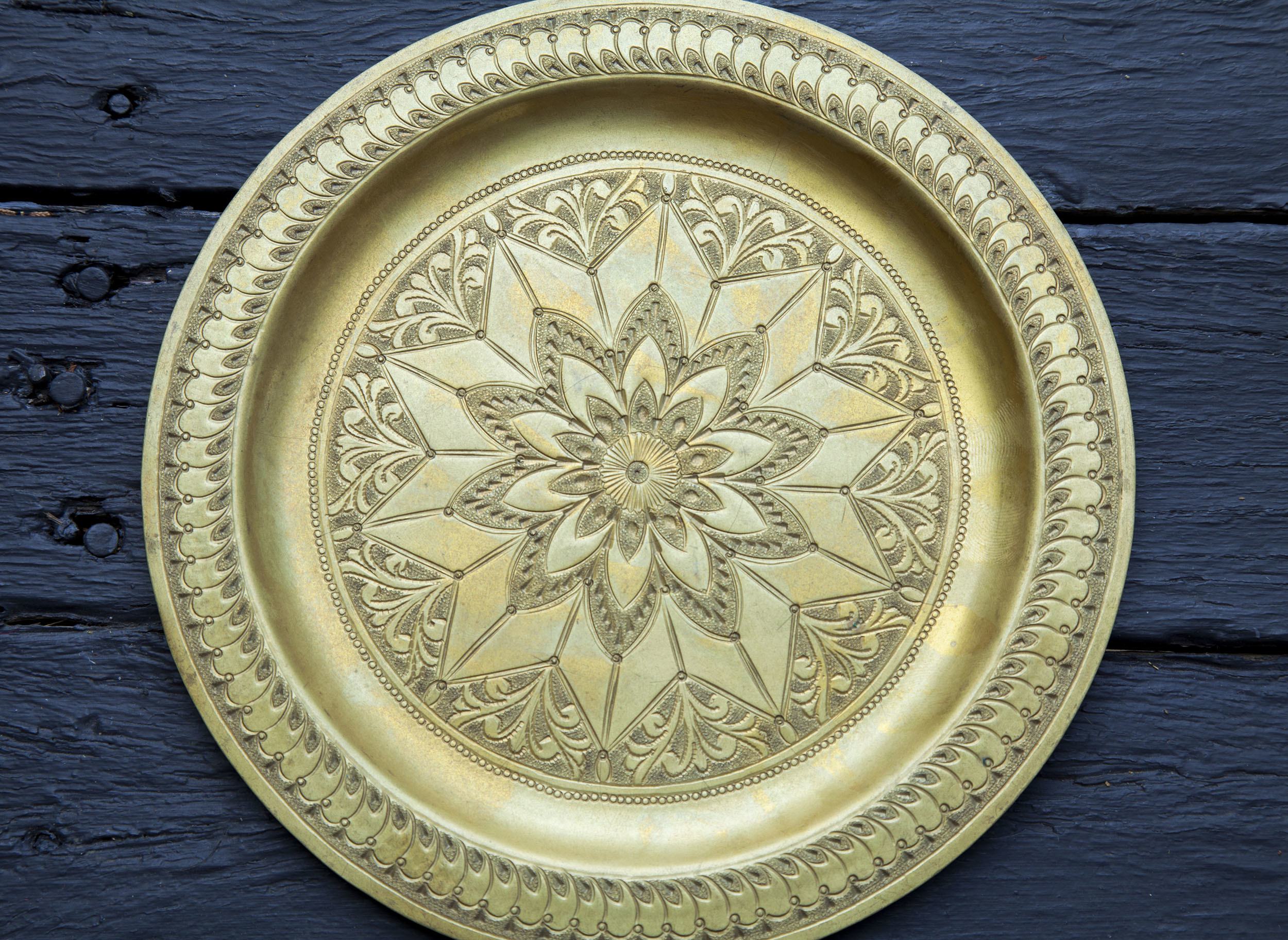
Watching artisans in action is fascinating: with concentrated faces, they fixate on every detail until they are perfected, hammering out flaws as they go. Selecting a plate to gift my mother was thus a joyous task, replete with artisan observing and moments spent fussing over a multitude of design options.
Leathery Goodness: Locally Dyed
No trip to a bazaar is complete without a leathery purchase: in Fez’s case, options are plentiful and varied. Home to a large selection of world-class leather dyed locally in the iconic Chaouwara tannery, buying a Moroccan-produced item can be filled with pungent aroma and tout-hassling.
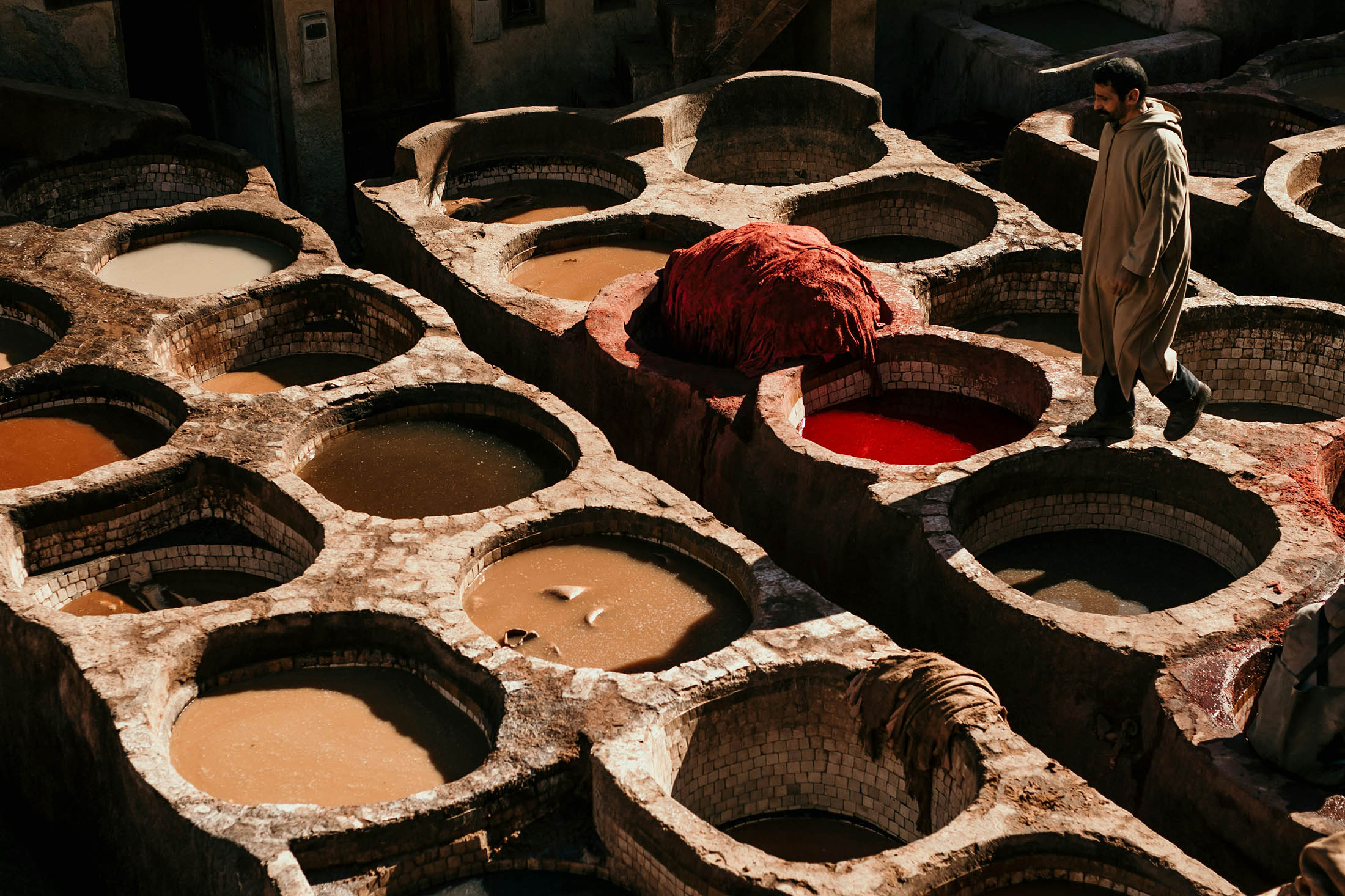
But the satisfaction derived from discovering a handbag, wallet, knapsack or belt perfectly suited to one’s fastidious taste far outweighs any painstaking measures of acquisition.
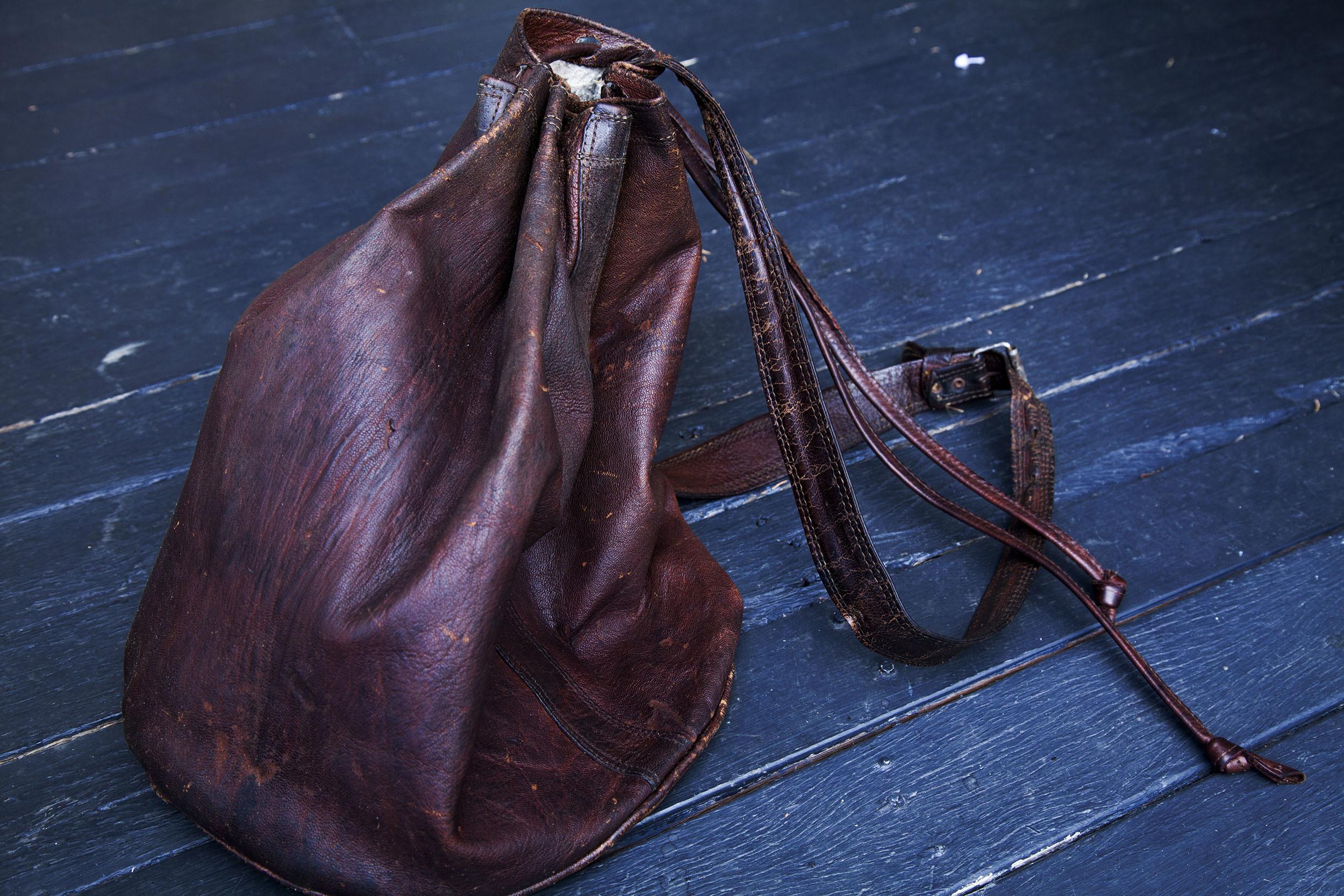
The knapsack I purchased from within the bazaar has lasted thirteen years, and consistently paints my face with a smile every time I think about its purchase.
Trinkets from the Bazaar - Shopping in Fèz el-Bali
Overflowing with treasure, leaving Fèz’s bazaar empty handed is unthinkable. Its hidden jewels await to be uncovered so go, indulge your senses and fill your homes - both current and future - with mementos of Morocco.
